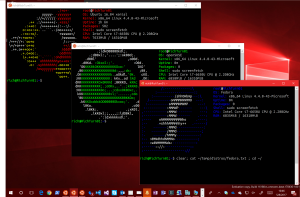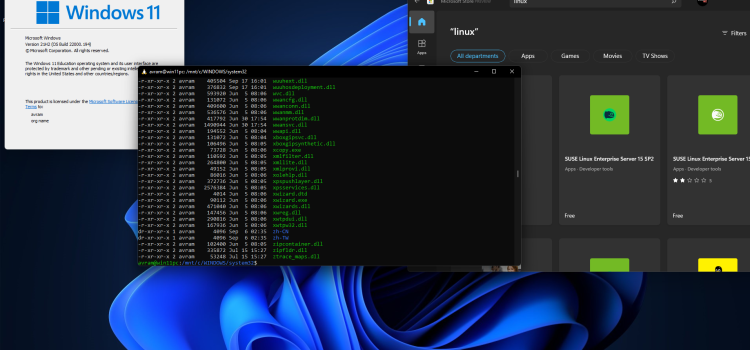
Introduction: Windows Subsystem for Linux
The Windows Subsystem for Linux (WSL) has revolutionized the development landscape by allowing developers to run a complete GNU/Linux environment on Windows. With most command-line tools, utilities, and applications available directly on Windows, WSL offers a seamless experience without the need for a traditional virtual machine or dual-boot setup. In this article, we’ll dive into WSL and explore its latest version, WSL 2, which brings even more exciting features for developers.
1. What is Windows Subsystem for Linux (WSL)?
WSL is a compatibility layer in Windows that enables running Linux distributions alongside the Windows operating system. It allows you to choose your preferred GNU/Linux distribution from the Microsoft Store, making it easy to set up and use. Once installed, WSL provides access to common command-line tools like grep, sed, awk, and other ELF-64 binaries. Additionally, you can run Bash scripts and various GNU/Linux applications, including popular tools like vim, emacs, and tmux.

2. Introducing WSL 2: The Latest Version
WSL 2 is the next generation of the Windows Subsystem for Linux architecture. It is designed to run ELF64 Linux binaries on Windows and brings significant improvements over its predecessor, WSL 1. One of the primary goals of WSL 2 is to enhance file system performance, resulting in faster access to files and improved overall system performance.
This new architecture also provides full system call compatibility, meaning that Linux applications can interact seamlessly with your computer’s hardware. WSL 2 changes how Linux binaries interact with Windows, but rest assured, it maintains the same user experience as WSL 1, which is widely available and widely used.
3. Benefits of WSL 2 for Development
WSL 2 offers a range of benefits for developers, making it an excellent choice for various use cases. Some of the key advantages include:
- Flexibility in Distributions: With WSL 2, you can run different Linux distributions, such as Ubuntu, Fedora, Debian, and more. This allows you to work with your favorite Linux environment and access its vast package repositories.
- Enhanced File System Performance: Thanks to the architecture changes in WSL 2, file system operations are significantly faster, making software builds and other file-intensive tasks more efficient.
- GPU Acceleration: Developers involved in machine learning, data science, and other GPU-intensive tasks can leverage GPU acceleration directly within the WSL 2 environment. This opens up new possibilities for GPU-based development on Windows.
- Compatibility and Interoperability: WSL 2 brings improved compatibility with various Linux software, enabling developers to seamlessly use Linux tools and applications alongside their Windows applications.
4. Getting Started with Windows Subsystem for Linux
Setting up WSL on your Windows machine is straightforward. Here’s a quick guide to get you started:
- Enable WSL Feature: Go to “Control Panel” > “Programs” > “Turn Windows features on or off.” Check the box for “Windows Subsystem for Linux” and click “OK.” Restart your computer when prompted.
- Install a Linux Distribution: Open the Microsoft Store, search for your preferred Linux distribution (e.g., Ubuntu, Debian, or Fedora), and install it. Once installed, launch the distribution to complete the initial setup.
- Updating to WSL 2 (Optional): To upgrade to WSL 2, you’ll need to have Windows 10 version 2004 or later. Follow the instructions in the Microsoft documentation to upgrade your WSL version.
- Using WSL: After installing and setting up your preferred Linux distribution, you can access it by launching the respective app or running “wsl” from the command prompt or PowerShell.
Conclusion
The Windows Subsystem for Linux (WSL) has undoubtedly transformed the development experience on Windows machines. With the latest version, WSL 2, developers gain access to a more robust and performant environment. Whether you’re a Linux enthusiast or a developer seeking cross-platform capabilities, WSL is a game-changer. Embrace the power of WSL and explore the vast possibilities it brings for your development projects. Happy coding!










